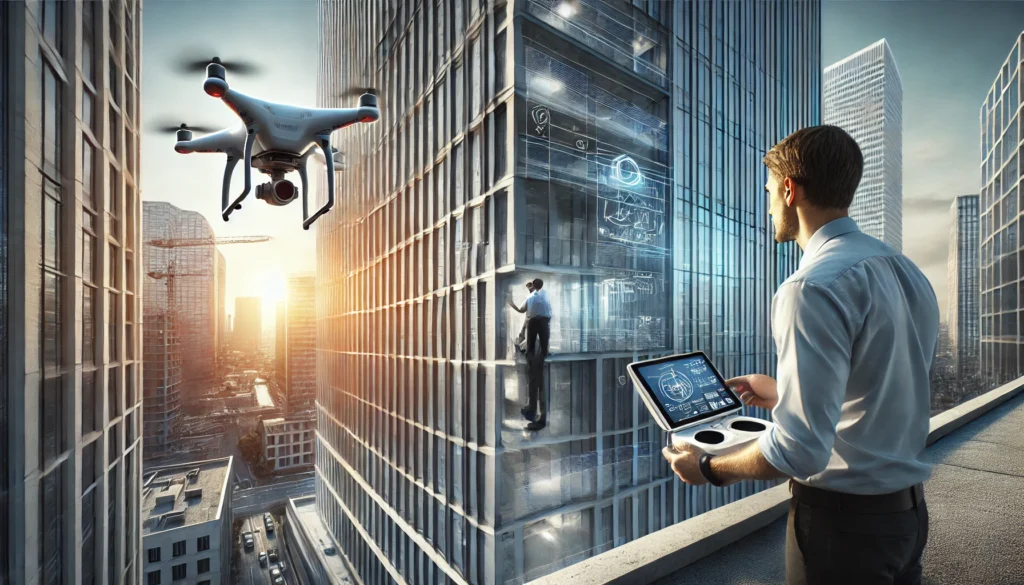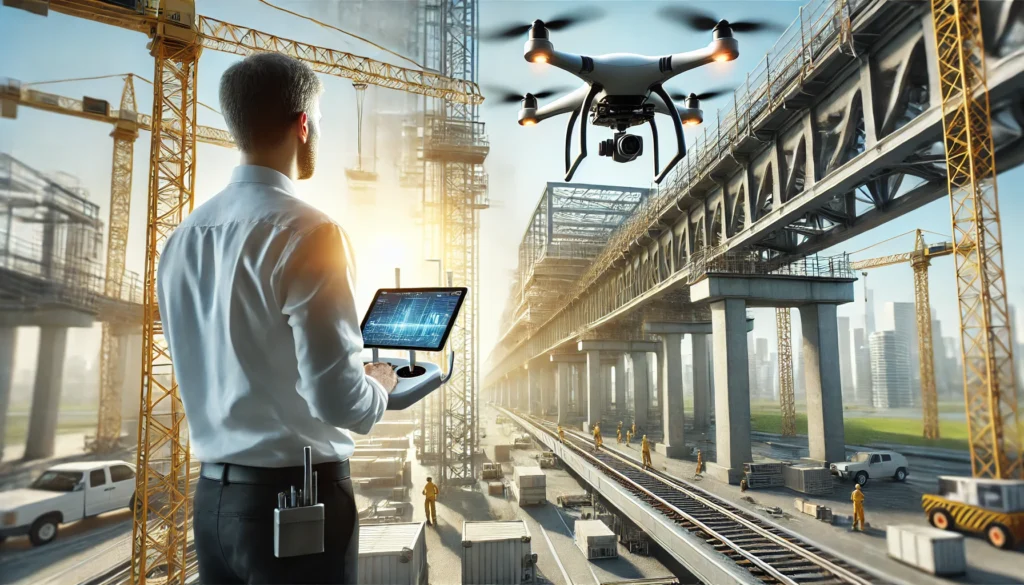Drones have revolutionized the way inspections are conducted across various industries in Malaysia. From infrastructure to agriculture, these versatile tools offer unprecedented access to hard-to-reach areas and provide detailed data that enhances decision-making and safety. In this comprehensive guide, we’ll explore the different types of drone inspections, the latest technologies, the challenges faced in the field, and the legal requirements you need to follow in Malaysia.
What Types of Drone Inspections Are Commonly Conducted in Malaysia?
Drones are used for a wide array of inspection tasks in Malaysia, thanks to their ability to capture high-resolution images and data from locations that would otherwise be difficult or dangerous to access. Some of the most common types of drone inspections include:
- Infrastructure Inspections:
- Application: Bridges, roads, railways, and power lines.
- Purpose: Drones capture detailed images and videos to assess the condition of infrastructure, identifying issues such as cracks, corrosion, and other potential hazards.
- Agricultural Inspections:
- Application: Crop monitoring, pest control, and irrigation management.
- Purpose: Drones provide real-time data to optimize agricultural operations, improve yield, and ensure sustainable farming practices.
- Environmental Monitoring:
- Application: Deforestation, wildlife conservation, pollution monitoring.
- Purpose: Drones gather data that supports environmental protection efforts, helping to monitor changes and assess the impact of human activities on the environment.
- Building and Construction Inspections:
- Application: Construction sites, surveying land, and monitoring building progress.
- Purpose: Drones help identify structural issues early, ensuring safety and compliance with regulations throughout the construction process.
What Are the Most Commonly Used Drones for Inspections?
In 2024, the market is filled with advanced drones tailored for specific inspection needs. Here are some of the most commonly used drones for inspections in Malaysia, along with their standout features and capabilities:
- DJI Matrice 350 RTK
- Use Case: Outdoor inspections with a focus on mapping and detailed assessments.
- Features:
- Flight Time: Up to 55 minutes.
- Payload Capacity: Supports multiple sensors for versatile inspection tasks.
- Durability: IP55 rating for dust and water resistance, suitable for challenging environments.
- Flyability Elios 3
- Use Case: Indoor inspections, particularly in confined spaces.
- Features:
- LiDAR Technology: Creates detailed 3D models of the inspected area.
- Collision-Tolerant Design: Operates safely in tight and hazardous environments.
- Advanced Lighting: Equipped with a 16,000-lumen lighting system for low-light inspections.
- Skydio X2 Enterprise
- Use Case: Outdoor inspections in challenging environments.
- Features:
- Dual Camera System: Combines visual and thermal data collection.
- Autonomy: 360° obstacle avoidance for safe operation.
- Rugged Design: Built with durable materials for high-performance inspections.
- DJI Mavic 3 Thermal
- Use Case: Thermal inspections.
- Features:
- Dual-Imaging System: High-resolution and thermal cameras for comprehensive data.
- Flight Time: Up to 45 minutes.
- Portability: Compact design with advanced safety features.
- Parrot ANAFI Ai
- Use Case: High-resolution visual inspections.
- Features:
- 48MP Camera: Capable of unique angles and detailed imagery.
- 4G Connectivity: Ensures stable and fast data transmission.
- Obstacle Avoidance: Advanced software for safe navigation.

What Are the Latest Technologies in Drone Inspections?
The field of drone inspections has seen rapid advancements, with several cutting-edge technologies enhancing the capabilities of drones:
- LiDAR Technology: LiDAR-equipped drones can create precise 3D maps, ideal for detailed inspections of complex structures.
- Thermal Imaging: Thermal cameras help identify temperature anomalies, making them indispensable for inspecting power lines, solar panels, and building insulation.
- AI-Powered Analytics: AI processes the vast amount of data collected by drones, enabling faster and more accurate identification of potential issues.
- Real-Time Data Transmission: With 5G connectivity, drones can transmit data in real-time, crucial for immediate analysis and decision-making.
What Are the Challenges Faced in Drone Inspections?
Despite the advantages, drone inspections face several challenges that need to be addressed:
- Regulatory Compliance: Navigating the legal requirements set by the Civil Aviation Authority of Malaysia (CAAM) can be complex, particularly when it comes to obtaining necessary permits and adhering to restricted zones.
- Data Management: The large volumes of data generated during inspections can be overwhelming, requiring robust data management solutions.
- Weather Conditions: Drones are sensitive to environmental factors such as strong winds, heavy rain, and extreme temperatures, which can limit their operational capabilities.
- Privacy and Security Concerns: Operating drones equipped with cameras and sensors can raise privacy issues, especially in populated or sensitive areas.
What Are the Legal Requirements for Drone Inspections in Malaysia?
Operating drones for inspections in Malaysia is governed by regulations from the Civil Aviation Authority of Malaysia (CAAM). Here are the key legal requirements:
- Drone Categories and Permits:
- Small Unmanned Aircraft System (sUAS): Drones weighing 20kg or less without fuel.
- Small Unmanned Surveillance Aircraft: Drones equipped for surveillance or data acquisition.
- Unmanned Aircraft System (UAS) Over 20kg: Requires additional certifications and oversight.
- Permits: Necessary for any commercial drone activity, with fees varying based on drone weight.
- Operational Restrictions:
- No-Fly Zones: Drones are restricted from operating near airports, in controlled airspace, and in certain sensitive areas like government buildings and military bases.
- Flight Altitude: Drones must not exceed an altitude of 400 feet above ground level unless special permission is obtained.
- Proximity Limits: Drones should not operate within 150 meters of residential, commercial, or industrial areas without a permit.
- Insurance and Liability:
- Aviation Liability Insurance: Recommended to cover potential damages or accidents.
- Local Compliance: Operators must adhere to all local laws, including privacy regulations and airspace management.
- Safety and Security Measures:
- Visual Line of Sight (VLOS): Operators must maintain unaided visual contact with the drone at all times.
- Equipment Checks: Drones must be regularly inspected to ensure they are in good operating condition before each flight.
For more detailed information, you can visit the CAAM website.


